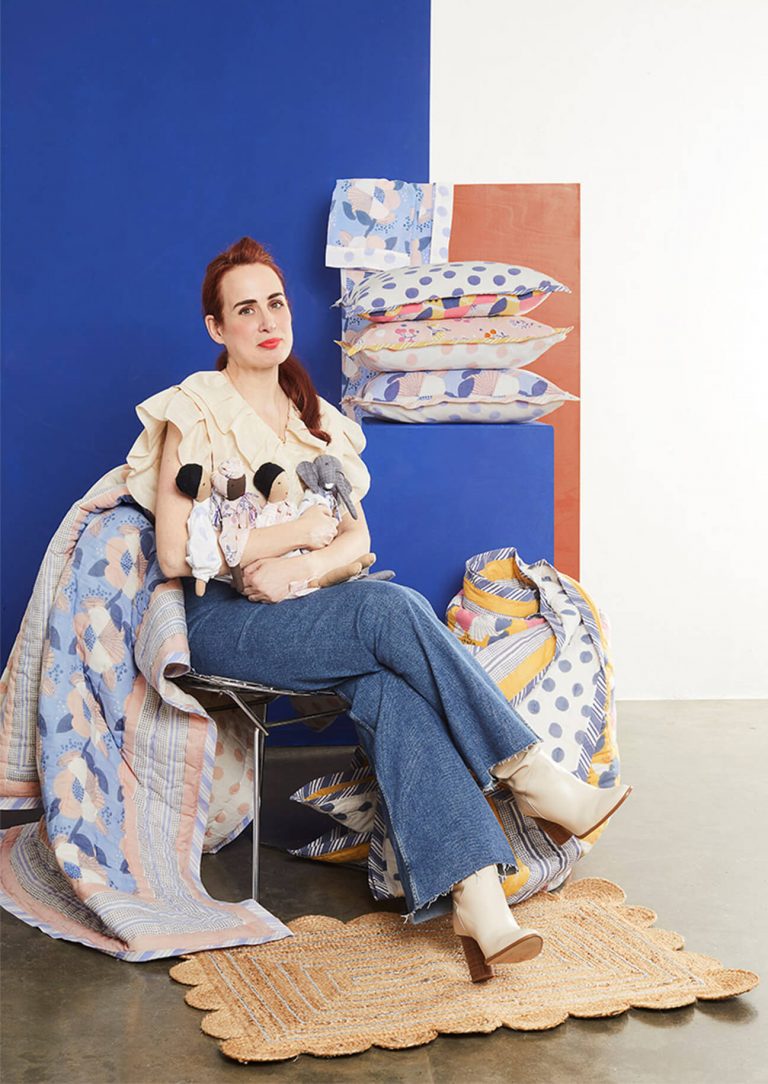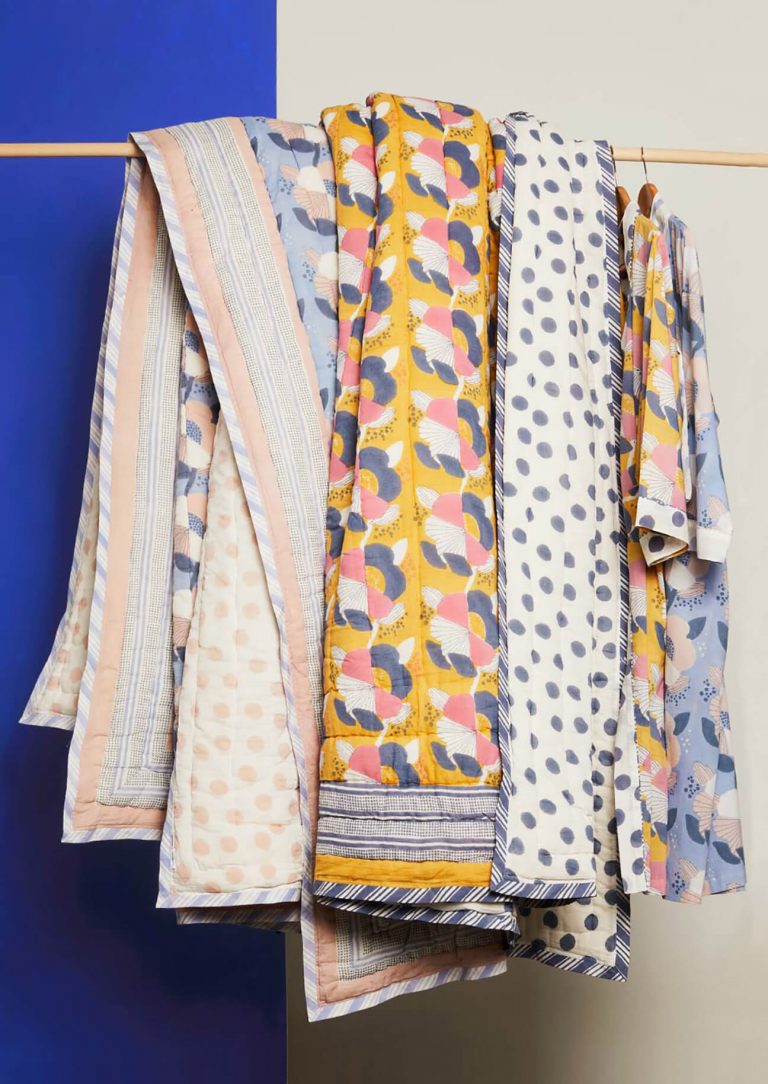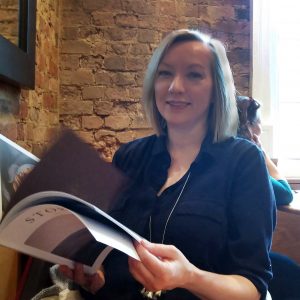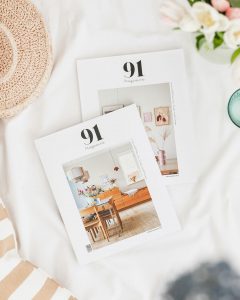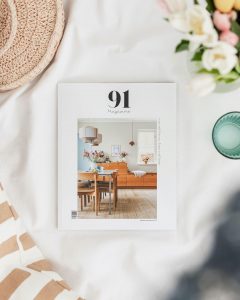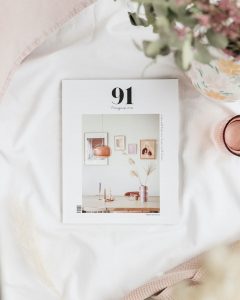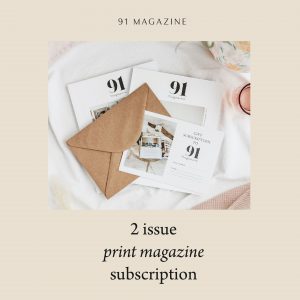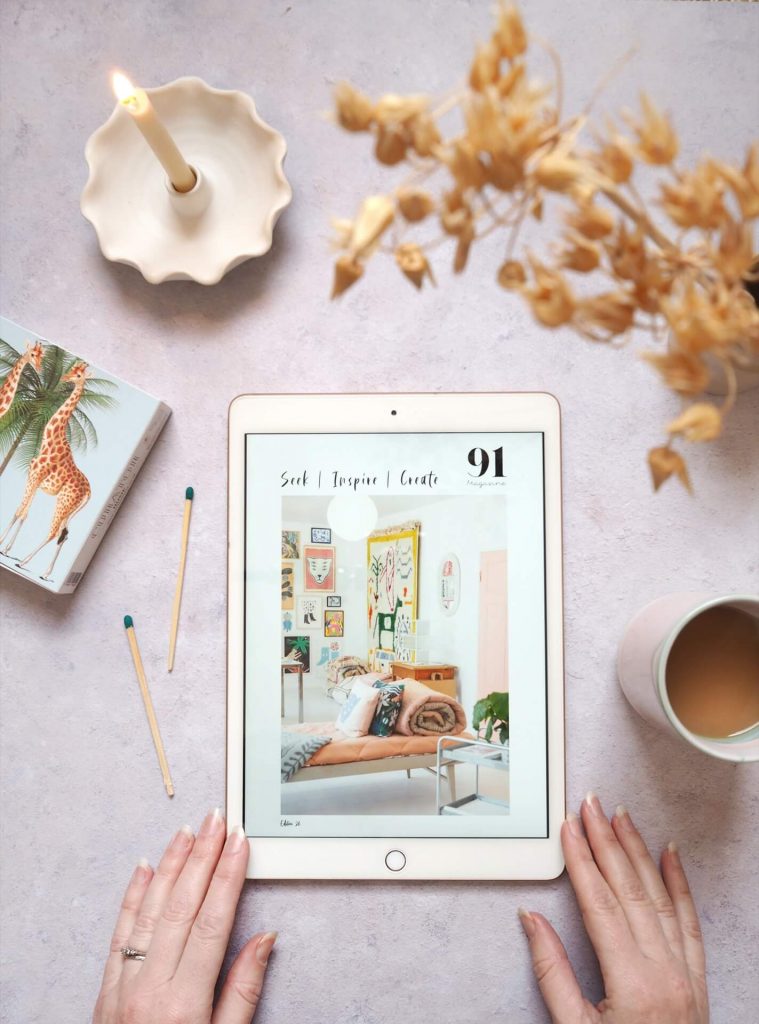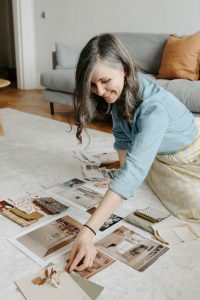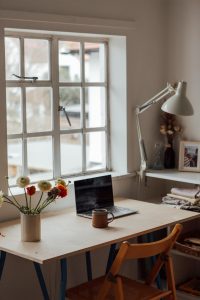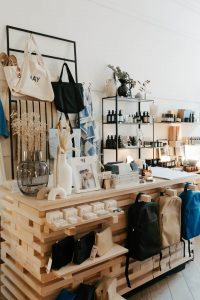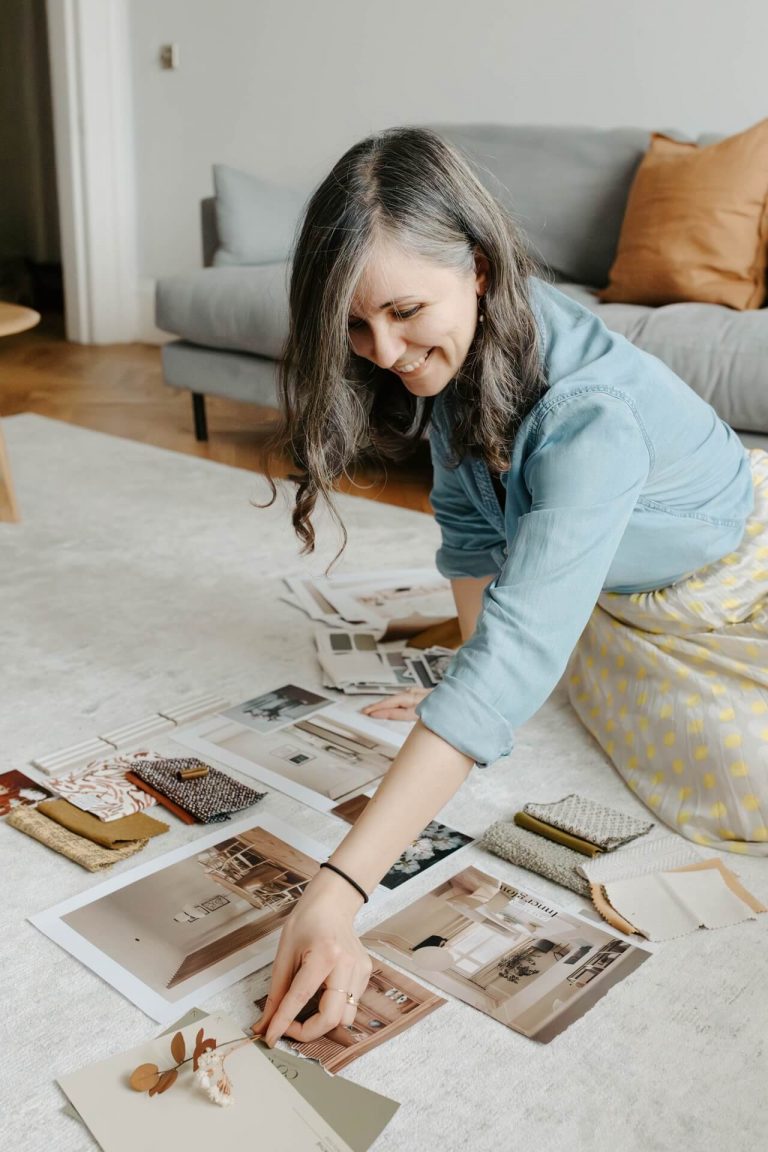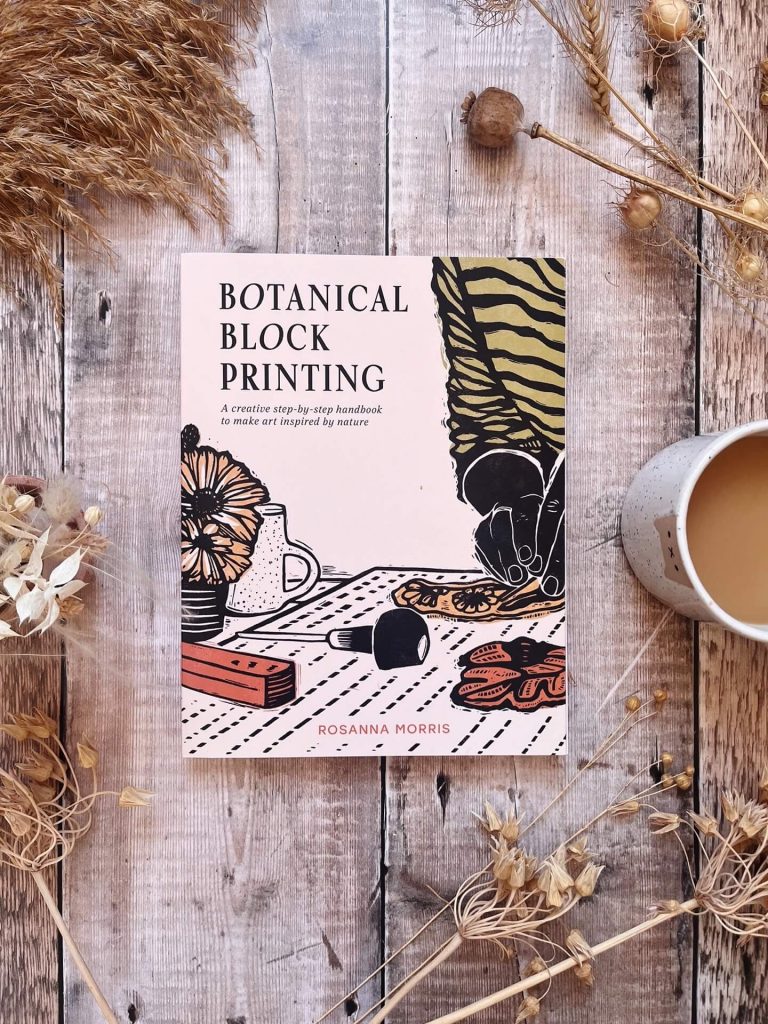Hi Noa, how would you describe your work to someone discovering it for the first time?
ai·no·ah launched in late summer 2022 with a collection of block printed and handmade styles inspired by traditional craftmanship paired with contemporary sensibility.
Focusing on small-scale ethical production, we design unique pieces that will brighten your home, whilst celebrating and sharing the stories behind their making. Our passion for artisan collaborations is the core inspiration behind everything we do.
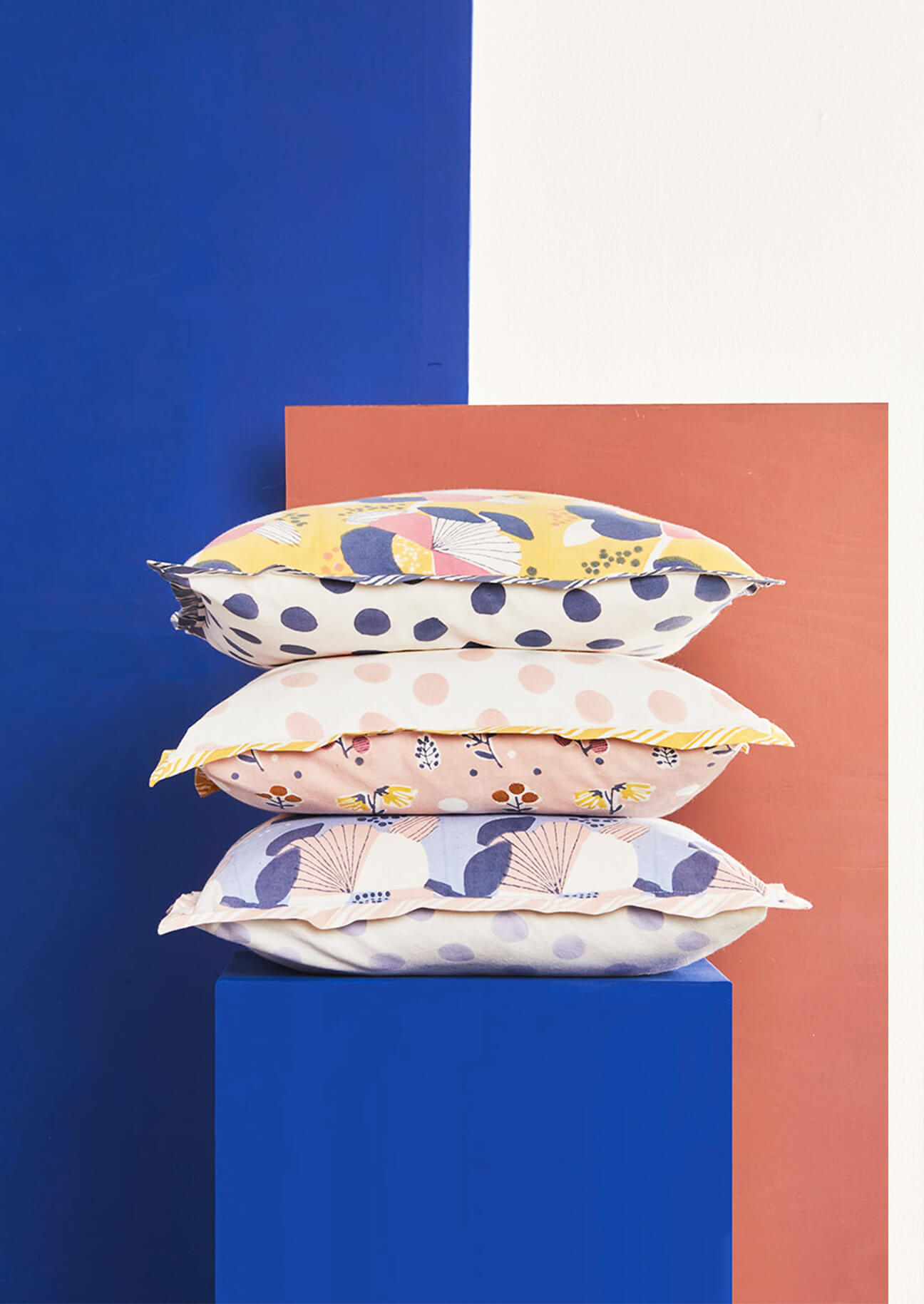
Photography by Helen Marsden
How did ai·no·ah come to be?
I had taken a sabbatical from a demanding design job to go on a long trip with my son and my husband, which started in January 2020. We were meant to start our trip a few months after, and of course we all know what happened next. It was only during that pause that I had time to reflect on what I wanted to do next, and the idea to start my own brand slowly started to form. It was important for me to be able to spend an extended period in India, not only working with the artisans who were going to be working on the collection, but also getting to know them. I wanted the project to feel like a collaboration. The borders with India did not properly reopen until early January 2022, and as soon as they did, I was on the plane, ready to spend a couple of months in Jaipur.
How did your career begin?
I worked as a fashion designer in Singapore and Spain for a few years, then joined the British brand East and it was during that time that I discovered my passion for Indian textiles. We worked very closely with Anokhi, an iconic Indian brand who put block printing on the international map during the 70s. I was fascinated by the craft from my first visit to Jaipur.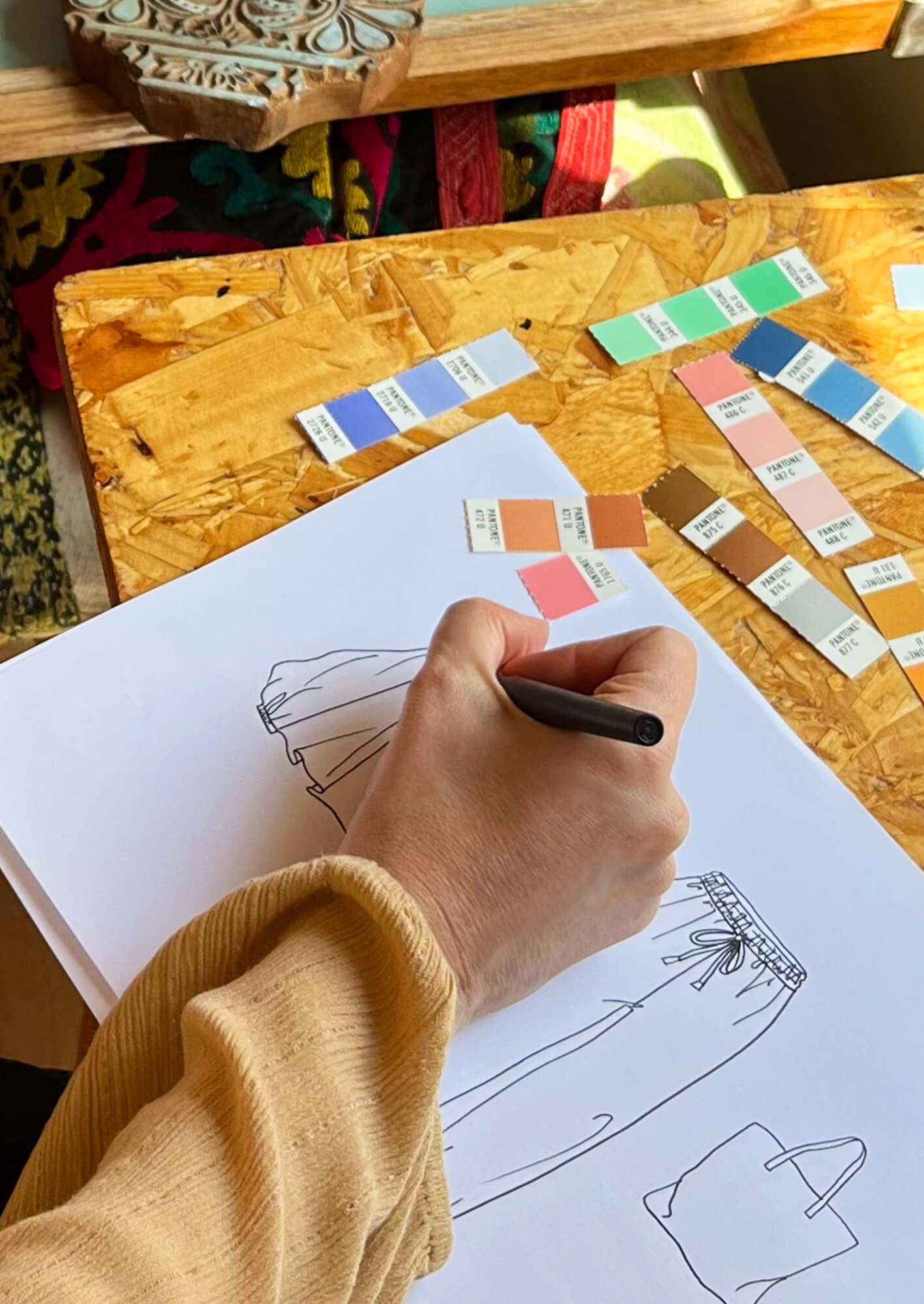
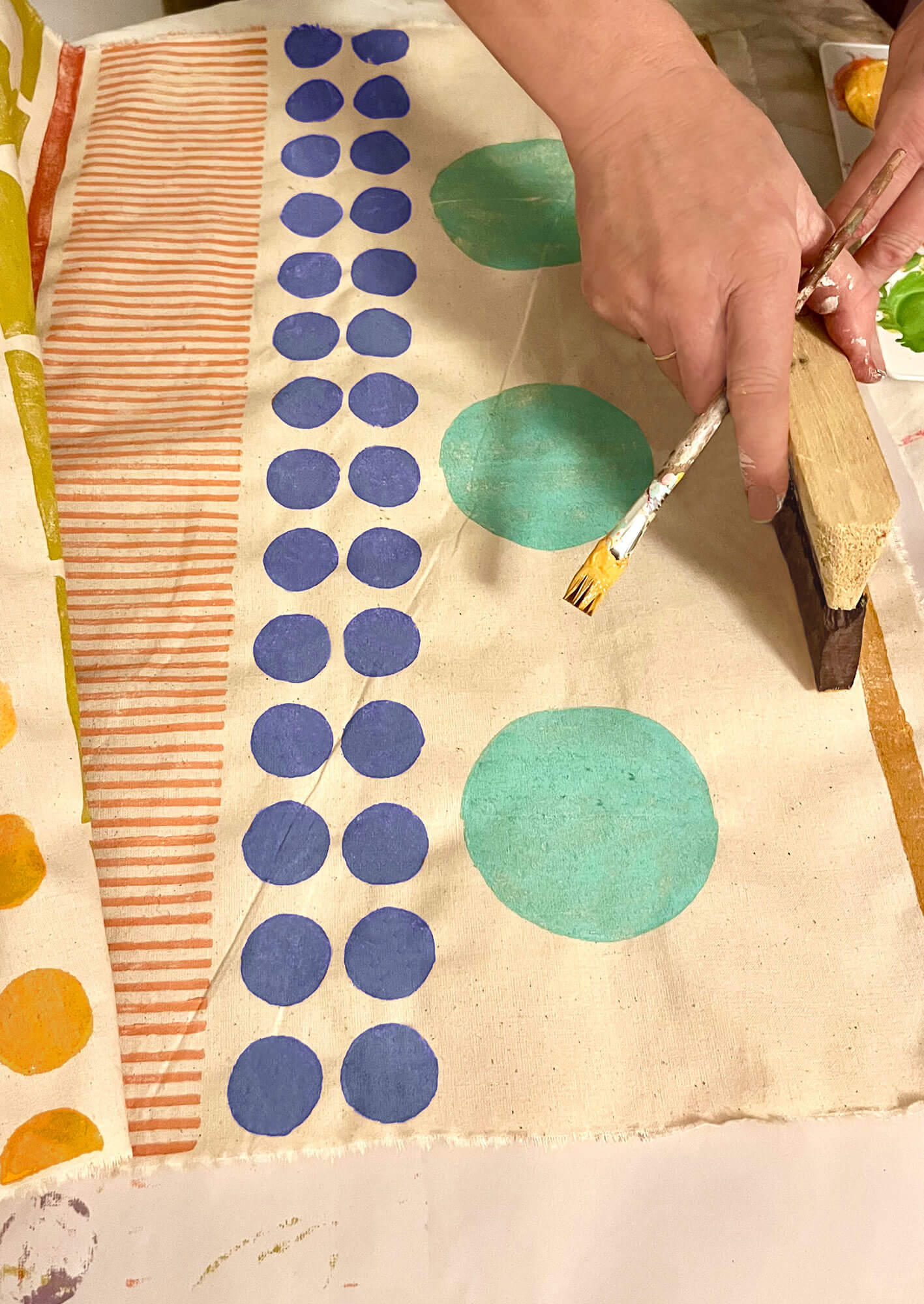
What’s the story behind the name ai·no·ah?
Many of my friends suggested the brand should be named after me, but this didn’t feel right. I felt that somehow, the collaborative efforts between me and my artisan partners should be represented.
This shared process is reflected in the name ai·no·ah, which is a phonetic transcription of my full name “Ainhoa” (in case you are now wondering, it is a French Basque name). The sound of the name is divided into recognisable parts that, pieced together, make up a whole – a little bit like our block prints, where one block lays over another to create a complete design. Equally, the artisans and their craft, our ethical and sustainable approach and the design process all come together to present the whole story.
What is the ethos behind your business?
There is an inherent charm in an object crafted by hand. I deeply value and want to champion traditional craft techniques that have been handed down through generations. Each piece is a testament to its maker’s unique spirit and creativity.
I collaborate with like-minded family-owned workshops, social enterprises, and co-operatives who follow ethical working practices such as fair wages and working hours. I maintain close relationships with our artisans through regular visits and communication, fostering understanding and transparency.
We work with a block printing workshop that has made significant positive changes in the local community through introducing environmentally friendly production and sustainable labour practices. Their efforts have not only helped preserve the block printing industry in the area, but also protected communities that were at risk of displacement.
I aim to work in the most environmentally conscious manner at every step. All our styles are made of locally sourced natural fabrics or recycled materials. Using fabric remnants from our collections for our dolls and locally sourced deadstock for our kantha quilts means we are not leaving much fabric waste behind. To further minimise our ecological footprint, our hang tags are crafted from cotton paper derived from textile industry waste. Each tag is hand-printed in a small workshop and is entirely tree-free.
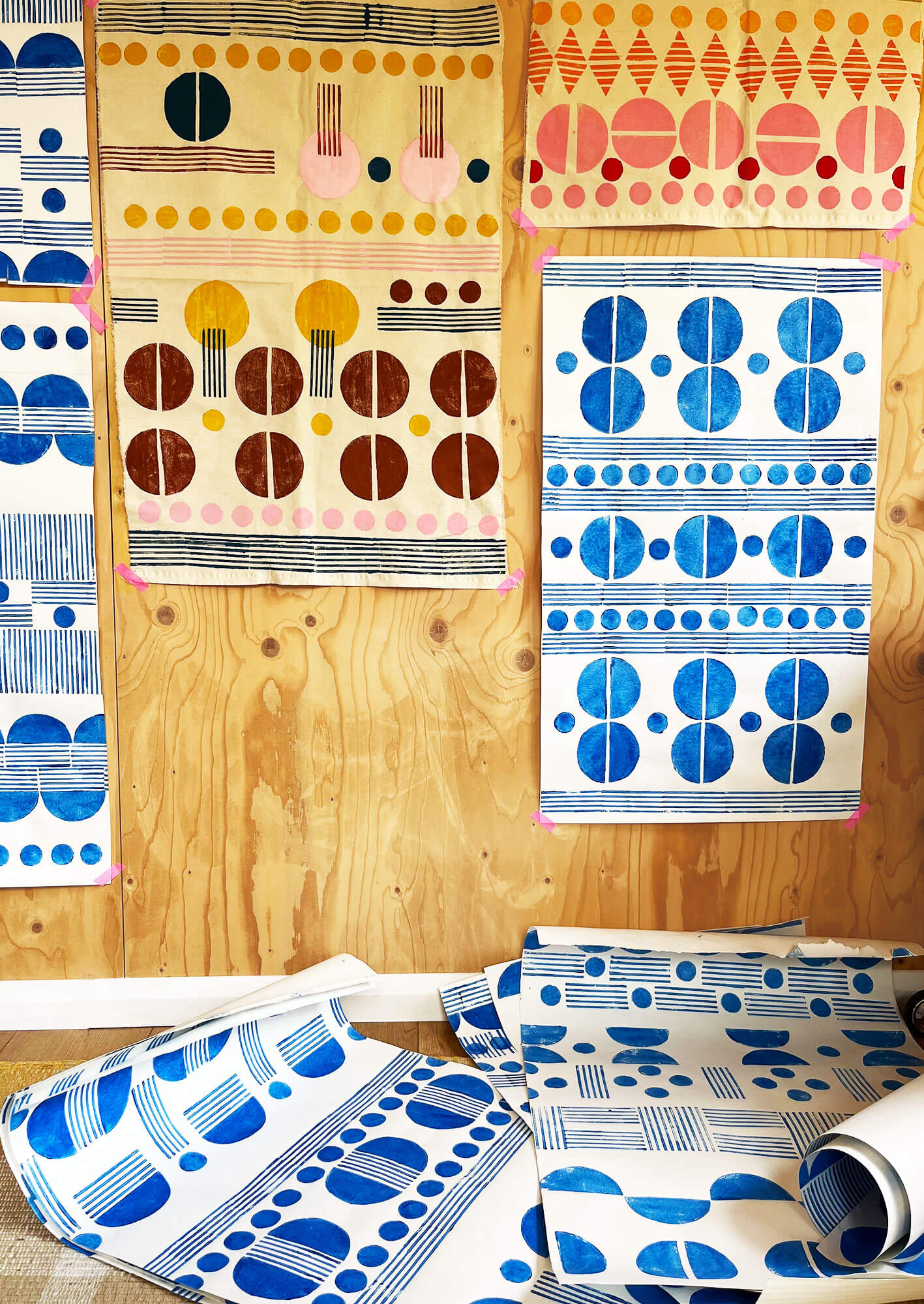
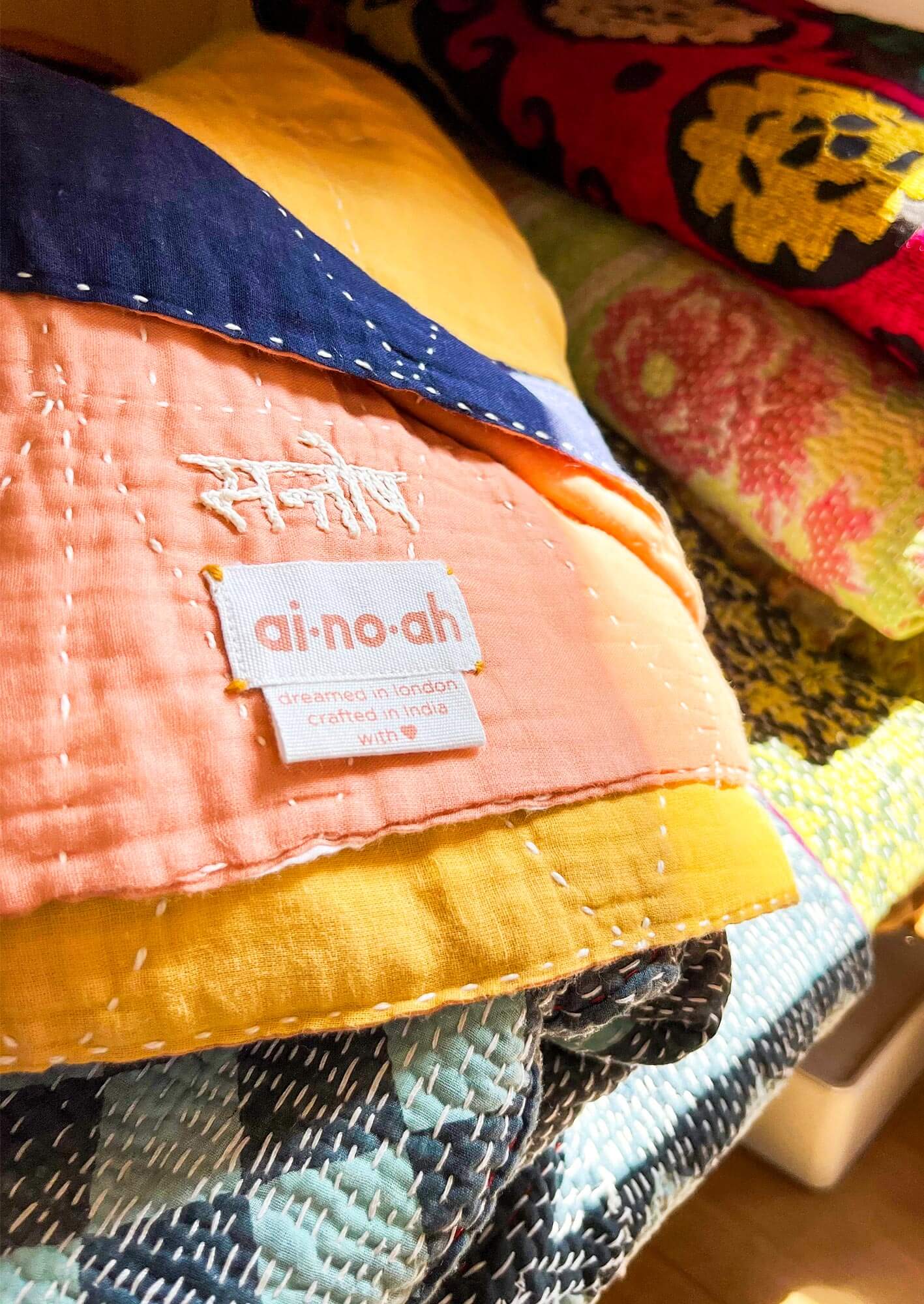
How would you describe your style?
Colourful and bold. Pretty without being sweet. I like designing collections that sit together in a surprising way, they don’t necessarily match yet work beautifully together. I love adding small finishing touches such as the embroidered signatures of our artisans on our kantha quilts, which I think makes them truly special, or the little message on our care labels, a reminder that each piece has been crafted by hand not made by a machine in a factory.
Are there themes or influences that run through your work?
I love mid-century textiles and Scandi design. I wanted to incorporate these influences into the block printing tradition and move away from designs of “bootis” (small flowers and plants), paisleys and other designs which you usually find. The boldness of the designs takes on a soft edge because of the translation of the designs into wooden blocks – when each element is block printed it blends with the next and any hard edges disappear. Usually, the first block to be printed is the one to fill the background colour, followed by a block that prints the outlines for shapes such as flowers. I wanted to remove these outline blocks which created an extra challenge for the printers, because that is the block that is normally used to guide the position of the next.
I have been collecting Japanese kimonos for a while. I was lucky to visit Japan many times in my previous job. You can find really beautiful yet cheap vintage kimonos at little flea markets outside some small temples. I was keen to incorporate a subtle Japanese influence to one of the first prints in the collection. Our large scale “Ume” design is inspired by the flowers of the Japanese apricot tree.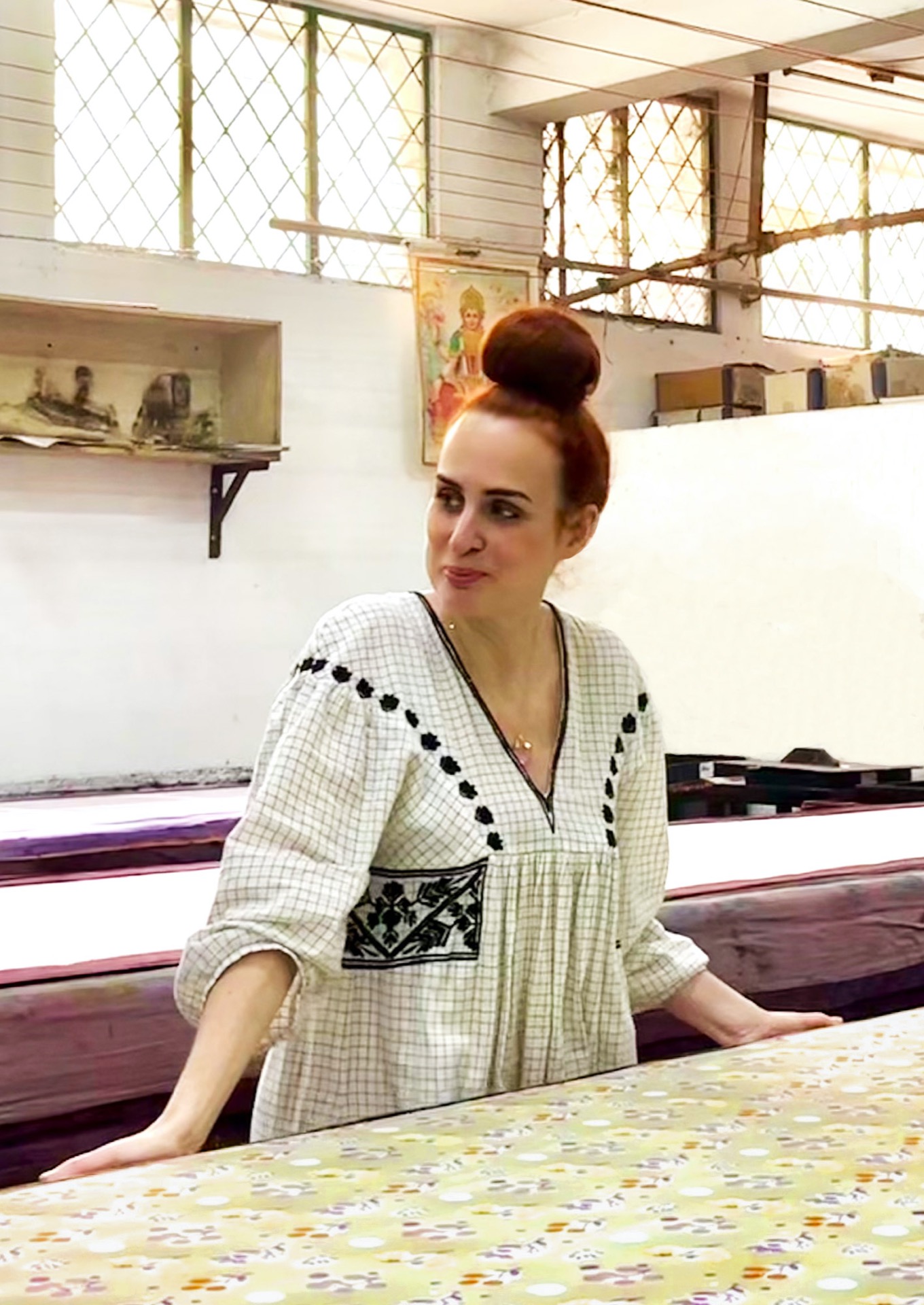
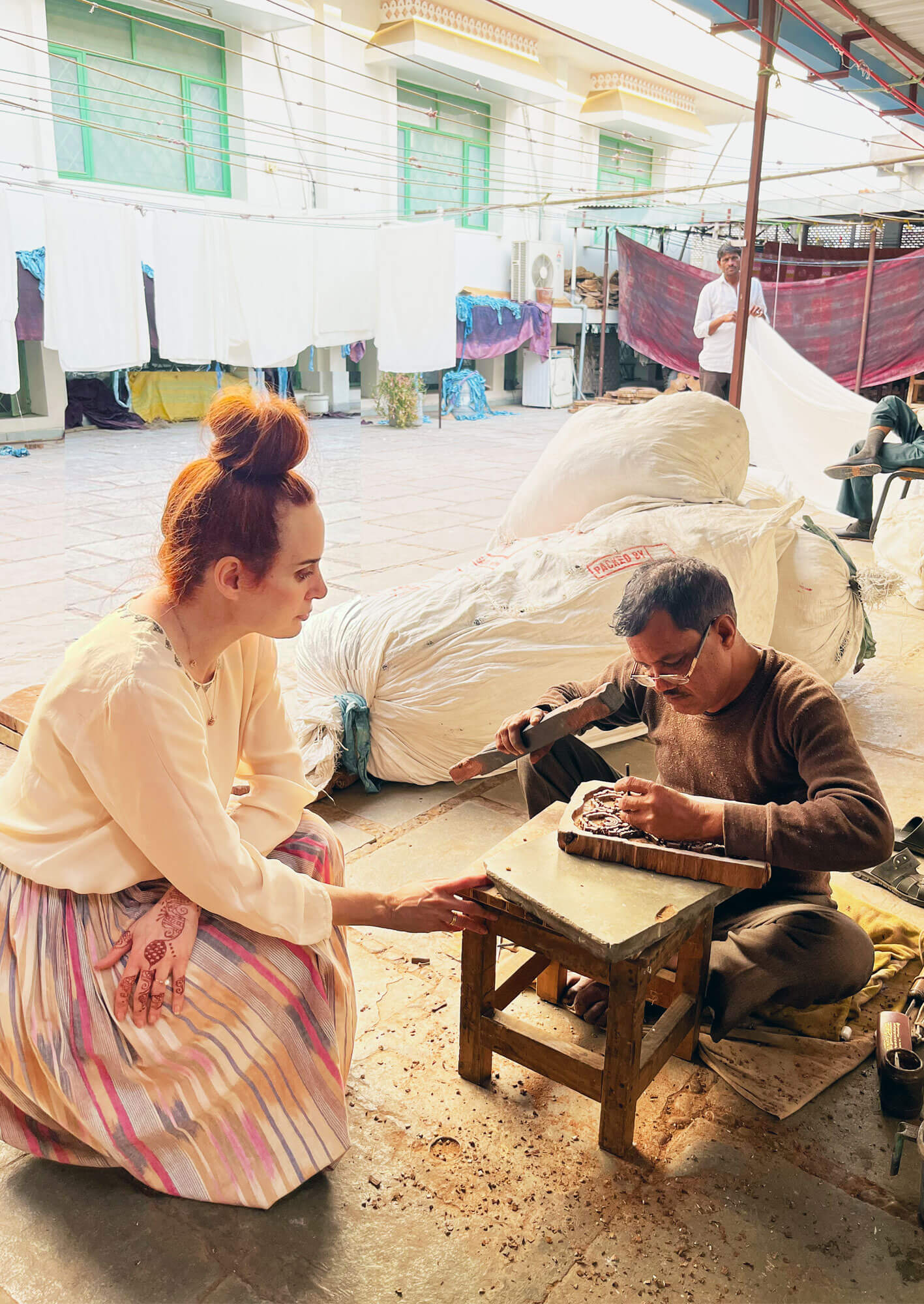
Could you tell us about the artisans that you work with?
I work with artisans in a small workshop in Sanganer, a town with a long history of block printing in Rajasthan. The artisans learn their crafts from a young age, learning from their fathers or uncles. Different communities are traditionally involved in different occupations. You find groups such as the chippas (printers) and dhobi (washers). Other artisans specialise in carving the blocks and some are colour masters, able to mix any colour by eye in a couple of minutes. Whilst block printing has been a male dominated craft for centuries, there is a new generation of women who are challenging tradition and learning how to print.
I am working with a female-led social enterprise who provide training and support to women from marginalised and oppressed communities in Rajasthan. The artisans learn tailoring, kantha stitching and natural dyeing techniques, and we have developed some gorgeous quilts together.
Our upcycled dolls are created in collaboration with Delhi based studio Silaiwali, a social enterprise with a combined mission that covers both environmental and social issues. Working with Afghan refugees who craft dolls from textile waste, and following fair trade principles, the team promote circular production by recycling this dead stock and turning it into beautiful dolls and gifts.
Where do you find creative inspiration?
A lot of ideas come from my travels. I love visiting markets and shops, particularly in South America, Asia and Africa, the ones away from the tourist spots. Observing people and exploring different cultural traditions can spark unique ideas and concepts.
Local vendors often dress in the most amazing pattern and colour combinations, putting things together in ways that I might not have thought about. If you ask around, someone will eventually let you into a secret or two and point you towards the best shops where you can buy locally made treasures rather than imported copies. I found some gorgeous “capulanas”, a type of sarong worn in Mozambique, in a tiny shop that I am sure not many tourists had visited, and made some amazing bench covers for the garden with them.
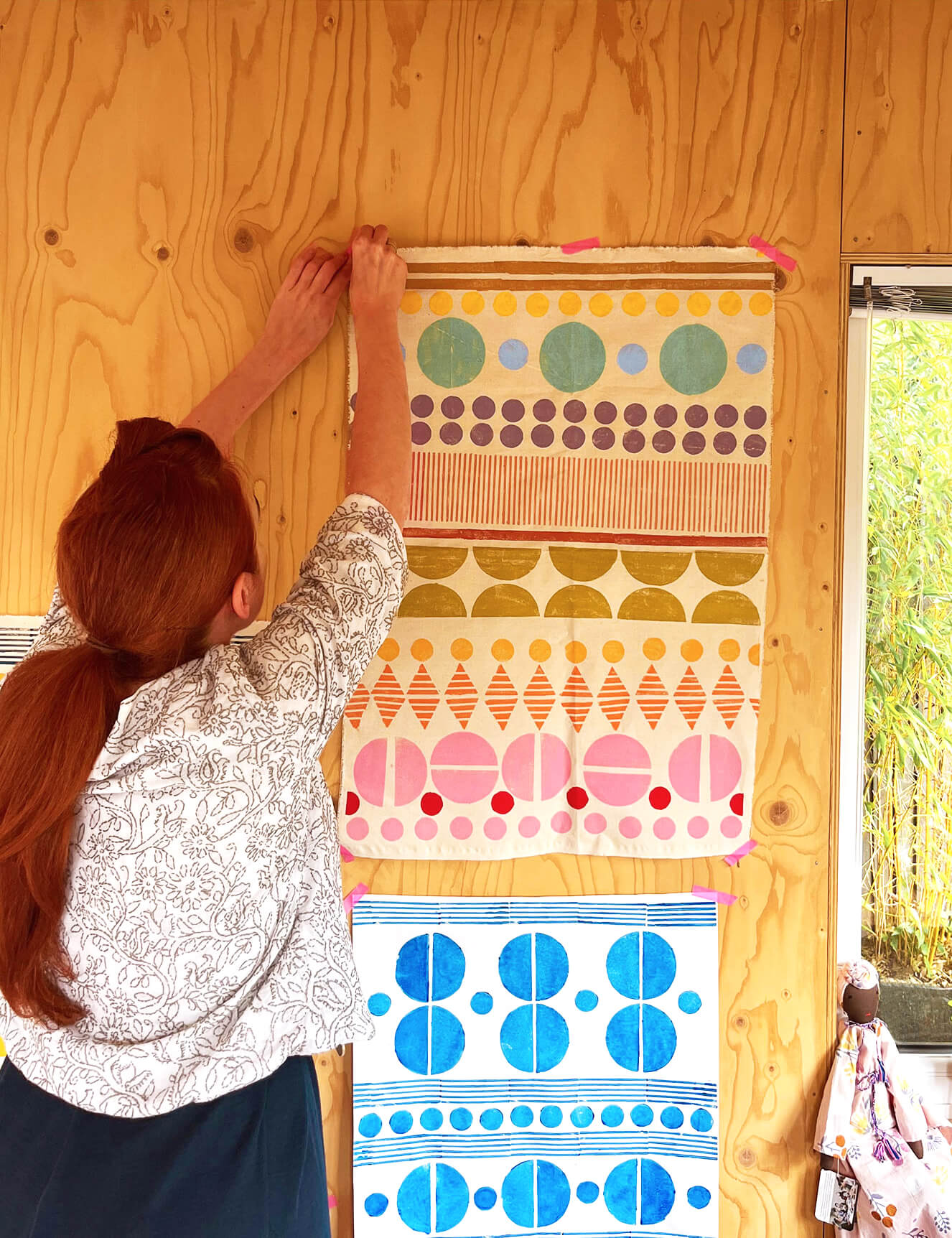
Tell us a about your creative process…
Colour is really important for me and is often my starting point when designing a collection. Inspiration can come from many places such as art, culture, nature, history, my travels… Research helps me identify themes and motifs that will shape the final designs. I start developing concepts for the collections, creating mood boards, adding swatches I have collected, sketching rough designs and visualising the overall aesthetic. These boards usually go through many changes, pictures are added in then taken out, and sometimes added back in.
Finalising a print can take a long time as I need to be sure I am totally in love with the design before sharing it with our artisans. The process of creating wooden blocks is lengthy and once they are carved, they can’t be amended so it is important to commit to the design and ensure it is workable. Due to the nature of block printing, there are many technical aspects to be considered, and I rely on the expertise of the artisans to let me know if any part of the design cannot be successfully translated, and if I need to make any changes.
I usually work on a few colourways which are printed as small swatches and then choose my favourites to print meterage, which is then used to make the collection. Seeing the prints come to life is exciting for everyone, the artisans gather around the print table to see the new designs, it feels like a real collaboration.
Could you describe a typical working day?
Each day is very different. I am currently running every aspect of the business on my own, from designing and logistics to packaging orders and posting them, so it really depends on what the day’s priorities are. I might be at an exhibition looking for inspiration, on a call with India discussing a shipment, creating content for social media, steaming garments before a photoshoot, fulfilling orders…There are many creative aspects to my job, but there is also a lot of admin to get done. Sadly, I don’t spend my whole day playing with colours and drawing.
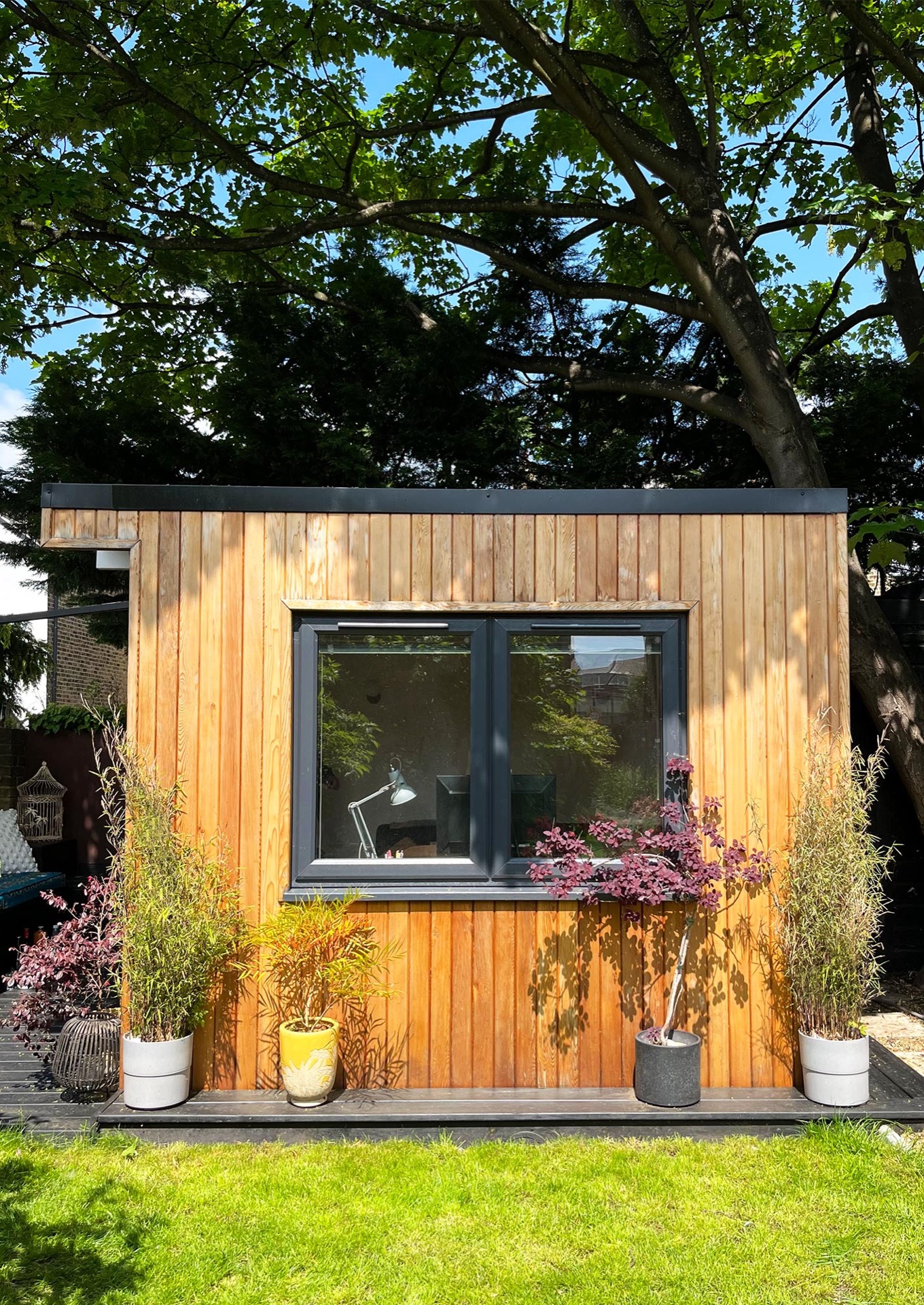
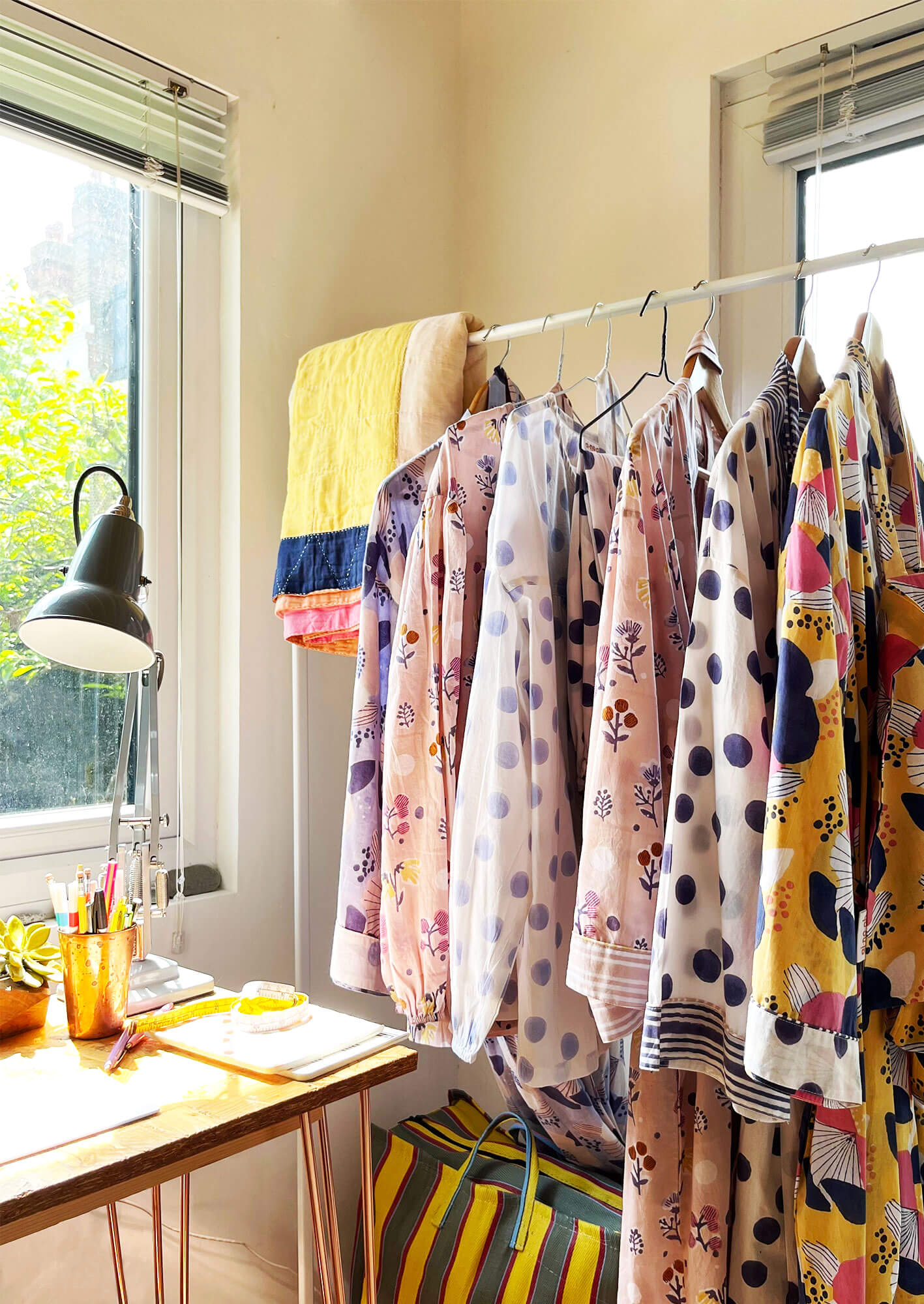 Tell us about your workspace and location…
Tell us about your workspace and location…
My husband and I built a room at the end of our garden during the first lockdown. I hadn’t started ai·no·ah at the time, so the room was not initially designed to be a studio, but it has turned out to be the most perfect space. We used Western red cedar for the outer cladding. The wood has a gorgeous range of colours, from soft golds and rich honey tones, to deeper browns. We used spruce plywood for some of the interior walls and for the ceiling, bringing a bit of a Scandi touch and warmth to the space.
We incorporated a very large window at the front and full height glass doors at the side, going onto our decking, so the room is usually flooded with light which is great when working so much with colour and pattern. The studio looks onto our garden, and it is lovely to see the changing of the seasons whilst sitting at the desk. We also have a large group of visiting wild ring-necked parakeets who hang out on our apple tree, plus a cheeky resident squirrel!
We are in Kingston-Upon-Thames, a leafy market town nestled along the banks of the river Thames, with a rich history dating back to the 12th century. One of the best things about working and living here is the abundance of green spaces. The town is surrounded by beautiful parks which together with the riverside walkways provide lots of opportunities to enjoy nature. We can also jump on a train and reach central London in half an hour, able to enjoy all the amazing things the Big Smoke has to offer. As much as I like the buzz of the city, I am happy I can go back to quieter surroundings at the end of the day.
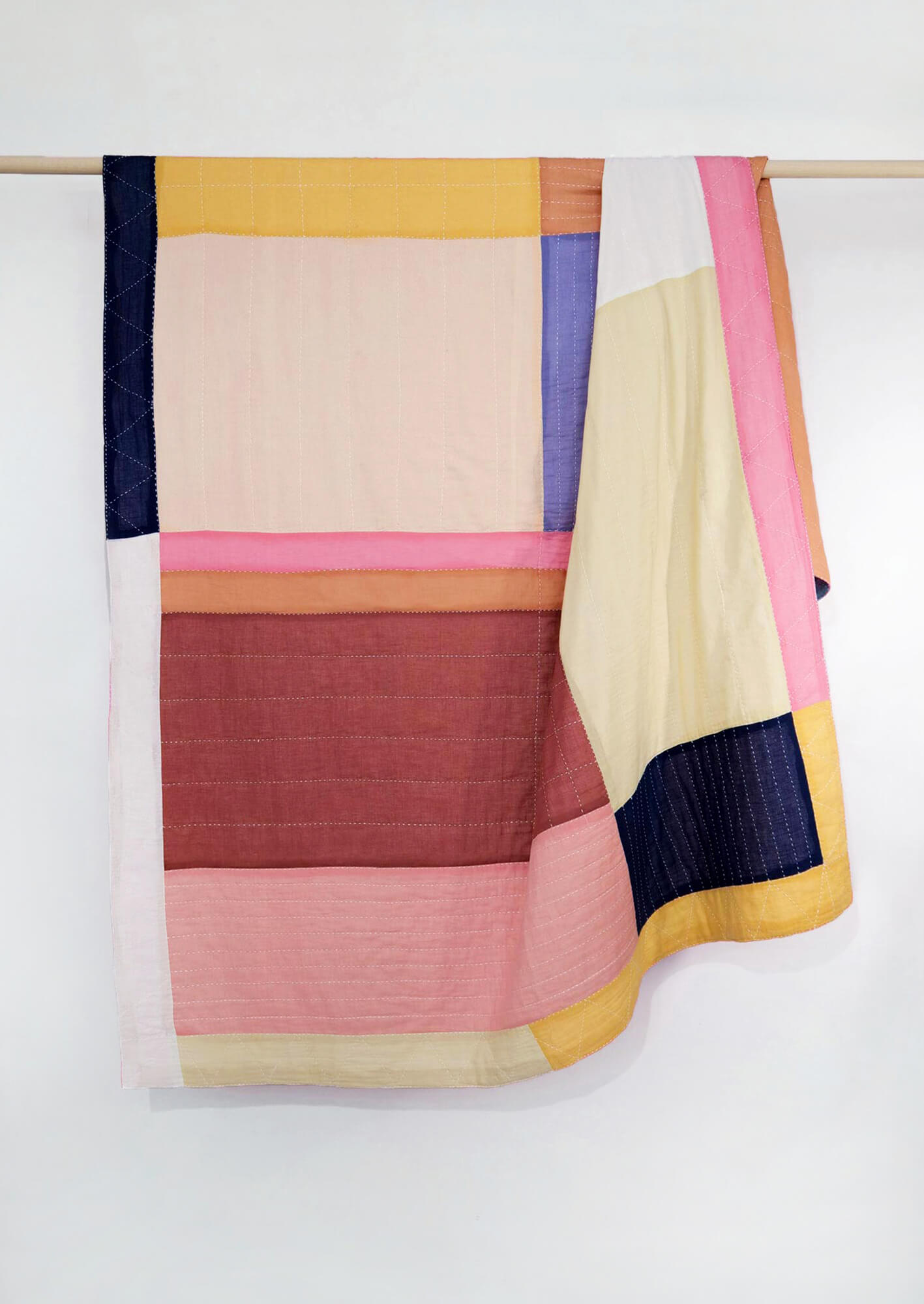
Photography by Tormod Sund
Is there an element of your work that you love the most?
Spending time with the artisans and learning from them, without a doubt.
How valuable is the online community to your work?
It is an invaluable resource, offering opportunities for networking, collaboration, and inspiration. Interacting with other small business owners who are also passionate about their work can help you stay motivated, as working on your own can be challenging at times.
It’s also a great way to be discovered and connect with your customers without needing a huge marketing budget. Most of the events and pop ups I have taken part in since our launch, as well as my first wholesale customers, have become a reality thanks to the connections I have made online. It is still early days and I have mainly concentrated on Instagram, as there have been so many other things to do and not enough hours in the day! I haven’t yet been able to build a presence on other platforms such as Pinterest, which I think could be great for ai·no·ah, but I hope to do this before too long.
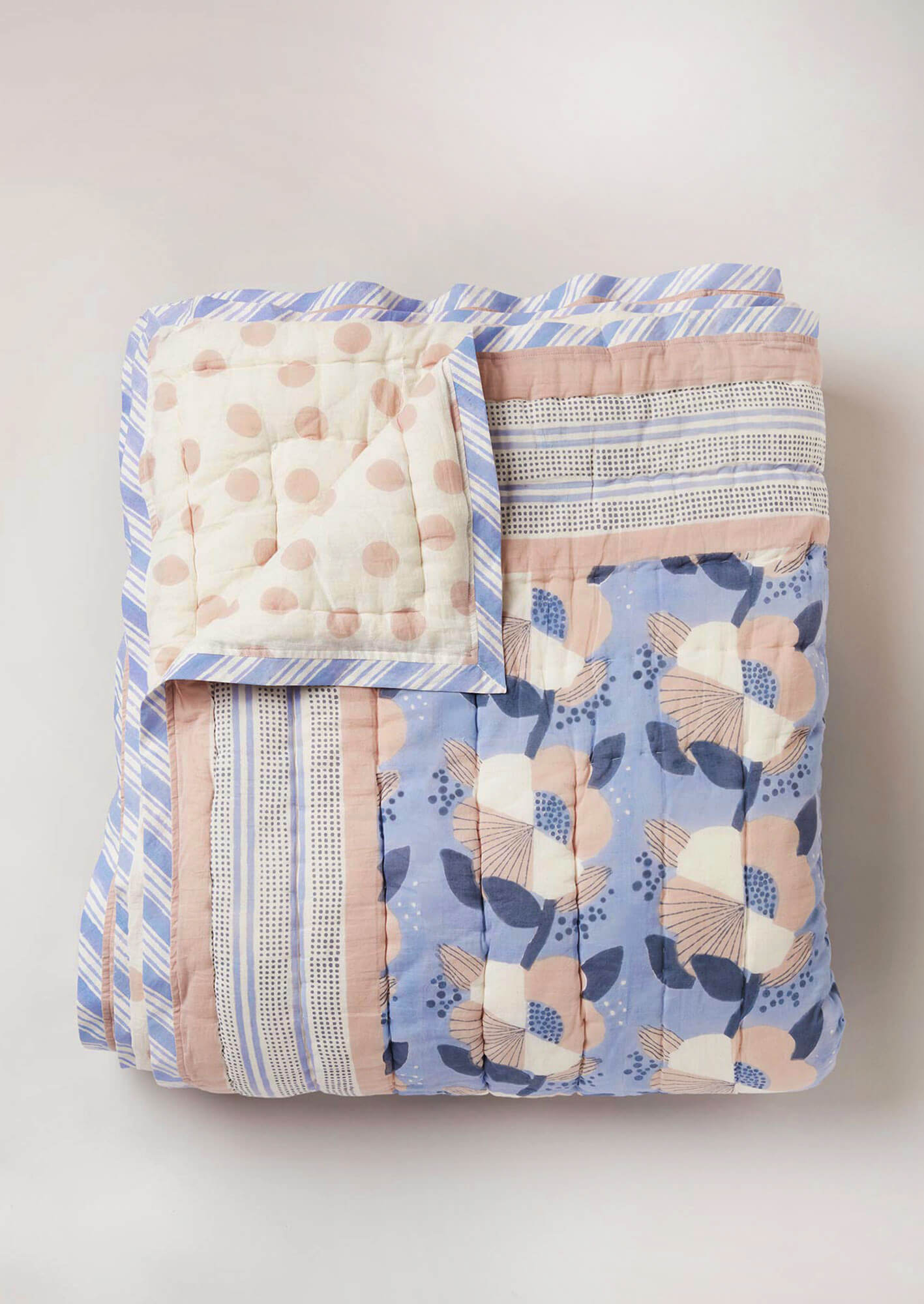 Photography by Helen Marsden
Photography by Helen Marsden
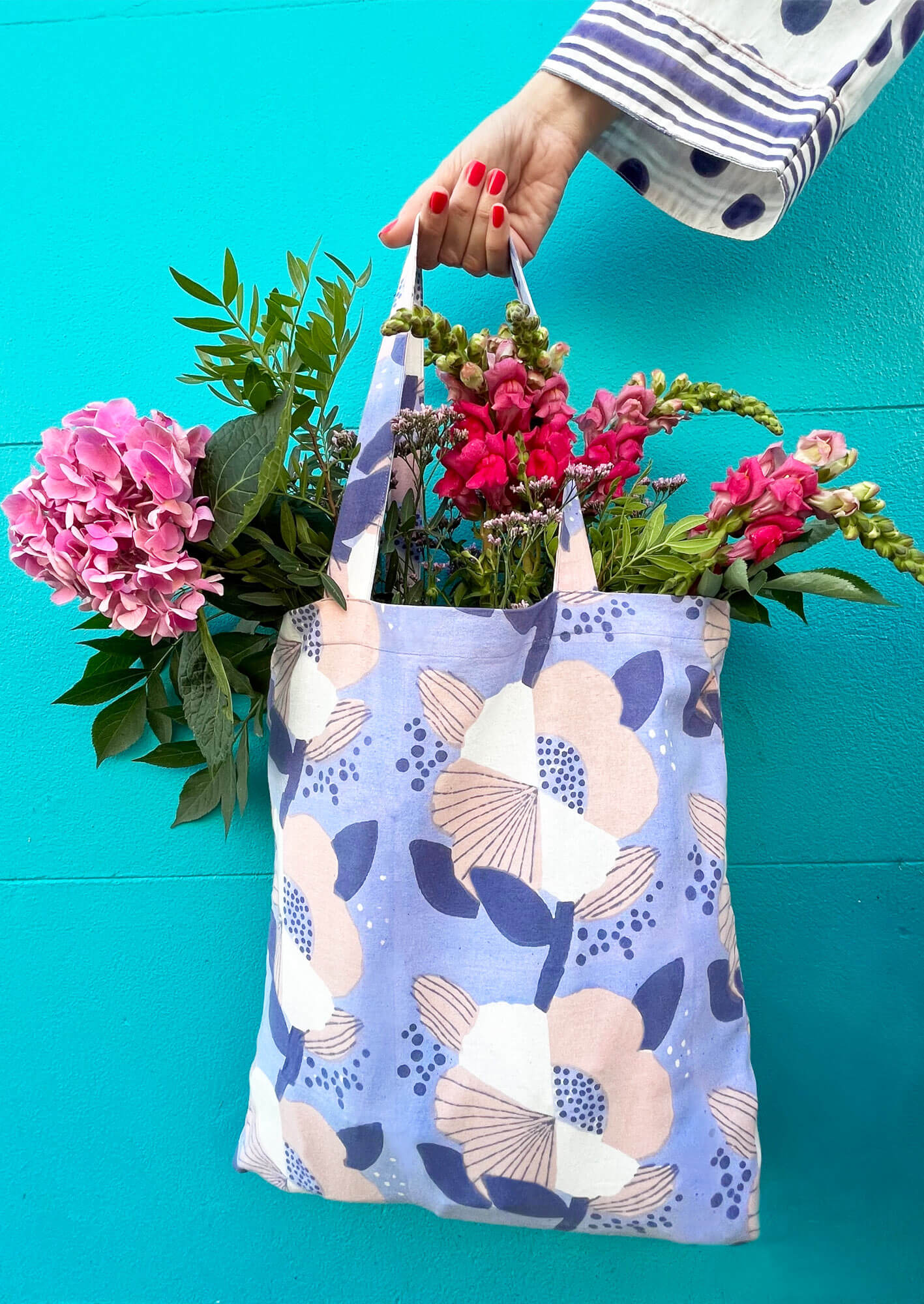
Photography by Tormod Sund
Working as an independent – what are the joys, and what are the challenges?
I love the freedom to be the owner of my own time. Being able to get lost in the creative process is a real luxury, which I never had whilst working for others. You also have an opportunity to challenge yourself, take on new responsibilities, and learn many new skills that are necessary to run your own business. Being independent allows you to pursue your passions and work in areas that truly interest you. While independence offers flexibility, it can also blur the boundaries between work and personal life, and you need to make sure you maintain a healthy work-life balance.
Working on your own can feel lonely at times. Making decisions when you have been staring at the same print or colours for a few days and you need to choose between one or another can be hard. I am lucky to have a close friend and local artist who I can call on when I need a sounding voice as well as an extended group of very creative women who I often consult with when in doubt. I couldn’t have got this far without them.
What have been your business highlights so far?
I had a pop up at Anthropologie only three months after launching the brand. I used to visit the Anthropologie stores a lot in the U.S. before they came to the UK. There was nothing like that over here in the early noughties. I have always loved the eclectic collections and the creative visual displays, so it was really special to be invited to join a brand I had followed for so long, and to know they appreciated what I had to offer.
What’s one thing people would be surprised you do in your job?
Maybe the fact that I have worked on most things myself, including designing the logo and building the website. I learned some basic coding because I was never going to be totally happy with using a template, and I wanted the page to look a certain way. Or maybe the fact that I don’t have a car, so I rely on kind friends to take me and my stock to fairs and events. Sometimes I go on public transport which involves lugging around two large suitcases and a rucksack. Not the most glamourous part of the job!
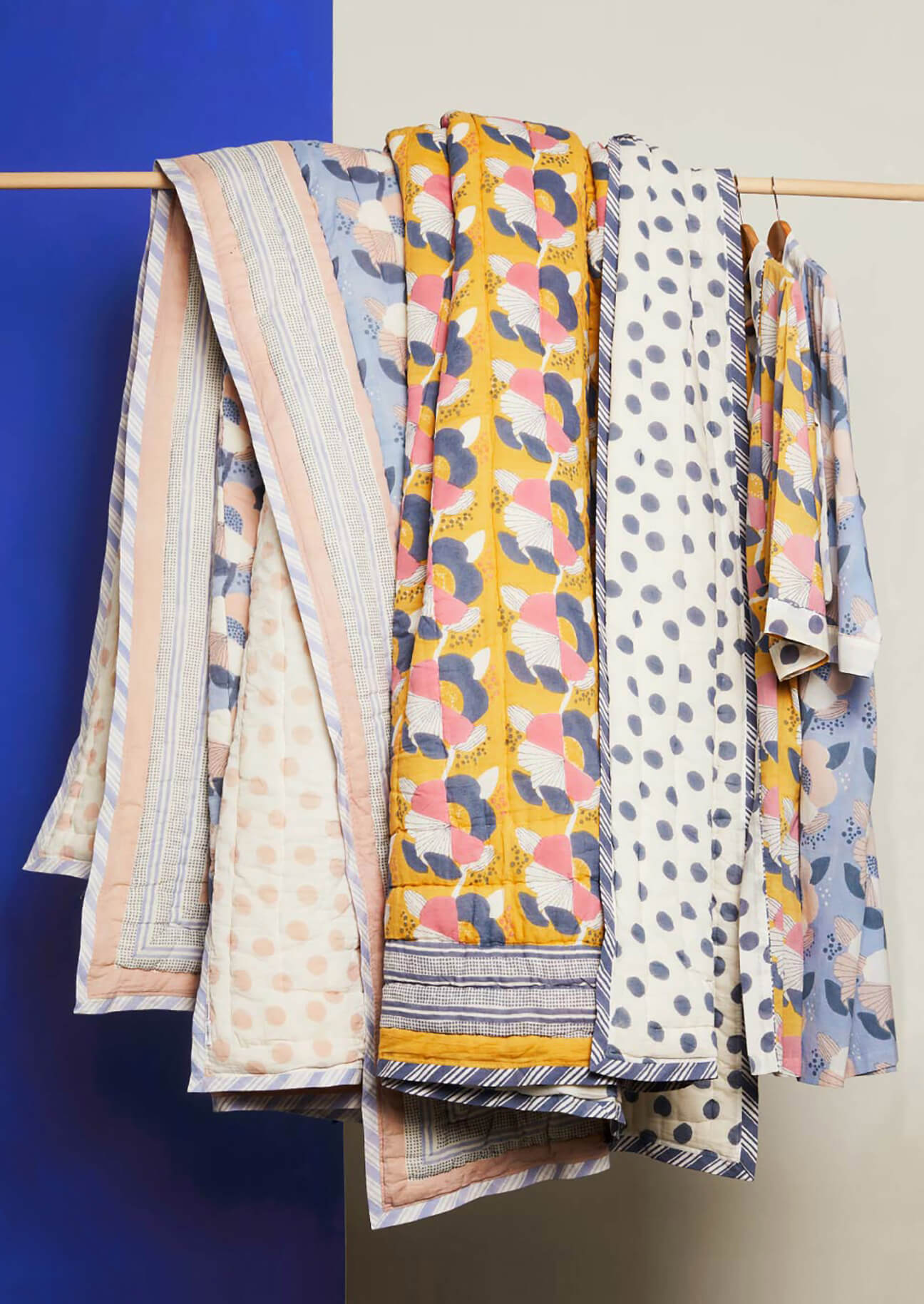
Photography by Helen Marsden
Do you have any creative hobbies?
As well as being a designer, I have been a jazz singer for over ten years and have my own band. I have performed in venues such as the V&A and the bar upstairs at Ronnie Scott’s.
What does the next year hold for you?
There are a couple of exciting things in the pipeline, but I am not allowed to say much more about those at this stage! I am planning to run more block print workshops after a successful start in my area. I love teaching others about this magical art and seeing how proud they leave with their creations. People are always fascinated when they learn about the processes and how little these have changed over the centuries.
I am taking the collection to Park Fair, a boutique festival in Oxfordshire at the beginning of July, celebrating independent artisans and lifestyle brands.
QUICK-FIRE QUESTIONS
Books I love: any book by Sibella Court, Colour a Journey by Victoria Alexander, Love Travel Indian Series by Fiona Caulfield and The Comfort Book by Matt Haig.
Creative Heroes: all the artisans around the world who are keeping incredible crafts alive, yet hardly ever get any recognition themselves.
Shops I love: Coverture in Notting Hill, Liberty, Merci (Paris), old shops untouched by time selling hand crafted items – from simple brushes and ropes to the finest hats and gloves.
Inspirational places: local markets around the world away from the tourist spots, Sunbury antiques market down the road from my studio, Jaipur, Marrakech, Japan.
Instagrammers I love: @themodernhouse, @archdigest and @haus_decoracion because dreaming is free, @animalsdoingthings when I need a bit of light entertainment, @lewismillerdesign who creates street installations by turning empty bins around New York City into voluminous vases overflowing with colourful flowers, and @accidentallywesanderson because it shows our beautiful world through a different and always colourful lens.
